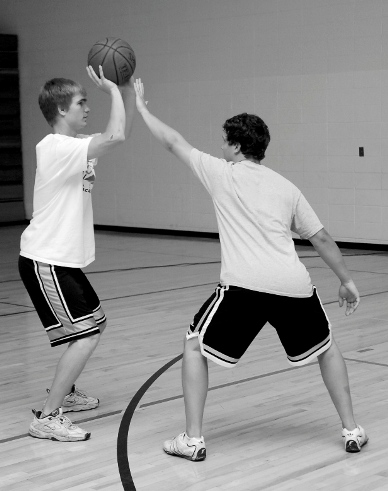Blocking Shots Can Lead To Foul Trouble And Other Defensive Problems
Instead, Try This Simple Defensive Tactic That Can Decrease Your Opponents' Shooting Percentage By As Much AS 25 Percent!
It doesn't matter if you play zone, man to man, or press...
Contesting shots can greatly improve your defense!
Notice, that I'm saying "contesting" and NOT "blocking." I believe teaching players to block shots can form bad habits, and most players do not have the ability to consistently block shots without hurting the team's defense.

- Close out fast & under control. If you close out too fast, a smart player will blow by you. You can also end up fouling the shooter if you can not stop your momentum.
- Extend your arm and hand up as high you can. Sometimes, players like to put their hands in front of the offensive player's eyes to disrupt their vision.
- Never Leave Your Feet. This can lead to a number of problems. An offensive player can draw the foul or drive by you. It can also put you in terrible rebounding position.
In the article, he recorded that..
NON-contested shots made 58.4% of their shots.
Contested shots only made 33.6% of their shots.
That's a 25% percent difference!
Contesting shots is not the only factor (rebounding, turnovers, and so on) that determines a win or loss, but it certainly is a critical one.
Start contesting shots today and watch your defense improve!
You can also find more defensive drills & strategies in our Man to Man Defense System
What do you think? Let us know by leaving your comments, suggestions, and questions...
|
|||||||||||||||||||||||||||



 Facebook (145k Followers)
Facebook (145k Followers) YouTube (152k Subscribers)
YouTube (152k Subscribers) Twitter (33k Followers)
Twitter (33k Followers) Q&A Forum
Q&A Forum Podcasts
Podcasts